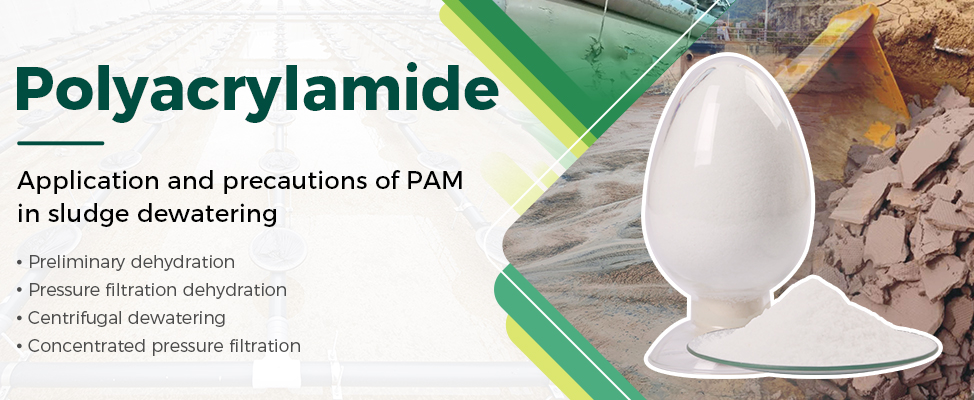
Sludge dewatering is a crucial step in wastewater treatment, aiming to reduce the sludge volume and facilitate handling, transportation, and disposal.
Polyacrylamide (PAM), a highly efficient organic polymer flocculant, plays a vital role in enhancing solid-liquid separation and improving dewatering performance. This article explains the working principle of PAM, its performance across different sludge types, precautions for use, and product selection tips—helping businesses improve efficiency and reduce operational costs.
The dewatering process involves removing water from sludge through chemical and mechanical means. PAM contributes by:
-Charge neutralization: Destabilizing colloidal particles by neutralizing surface charges.
-Bridging flocculation: Long-chain molecules aggregate fine particles into large, filterable flocs.
-Improving cake structure: Enhancing compressibility and reducing cake moisture content.
The efficiency of PAM largely depends on the nature of the sludge. Selecting the right type and ionic degree of PAM is crucial:
Municipal Sludge
-Characteristics: Rich in organics, high moisture, fine particles.
-Recommended PAM: Medium to high cationic degree (30%-60%).
-Performance: Excellent flocculation, lower moisture content in dewatered cake.
Paper Sludge
-Characteristics: High fiber content, potential for filter clogging.
-Recommended PAM: Cationic PAM with moderate molecular weight.
-Performance: Improves floc size, prevents equipment clogging.
Coal/Mine Sludge
-Characteristics: Inorganic, coarse particles, high density.
-Recommended PAM: Anionic PAM with low to moderate charge density.
-Performance: Promotes rapid settling and efficient filtration.
Food Processing Sludge
-Characteristics: High fat/protein, sticky texture.
-Recommended PAM: High molecular weight cationic PAM.
-Performance: Enhances separation of fat and solids, produces drier cake.
Chemical Sludge
-Characteristics: Variable pH, complex composition, may contain heavy metals.
-Recommended PAM: Case-specific testing; usually cationic or non-ionic PAM.
-Performance: Improves difficult sludge handling, ensures safe operation.
To maximize PAM effectiveness in sludge dewatering, consider these best practices:
-Dissolution concentration: Use 0.1%-0.3% solution to ensure even mixing and avoid clumping.
-Stirring method: Use low-speed mixing to preserve polymer chain integrity.
-Dosage optimization: Conduct jar tests to determine the best dosage, avoiding overdosing or waste.
-Injection point: Dose PAM before the sludge enters the mixing or dewatering unit.
-Storage: Keep PAM in a cool, dry place; avoid humidity and high temperatures. Liquid PAM should be used within a short time.
Polyacrylamide is a key enabler in efficient sludge dewatering. Correct product selection and proper usage not only improve dewatering efficiency but also reduce costs related to sludge transportation and disposal. With 28 years of experience in water treatment chemical manufacturing, we provide tailored solutions for various industries.
Contact us today for free samples, technical support, and long-term cooperation.

Please contact us for free quotation by form below. We promise the quickest response within 24 hours: